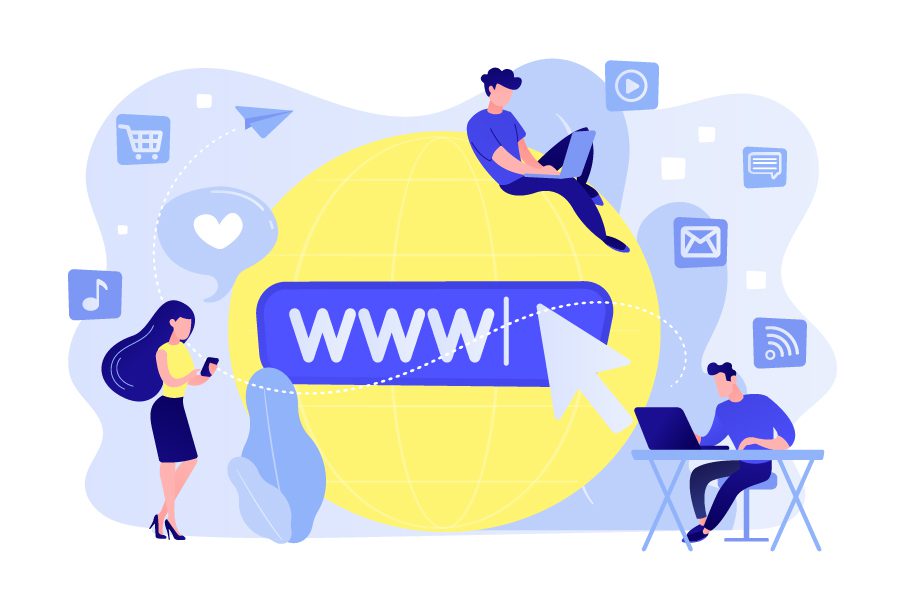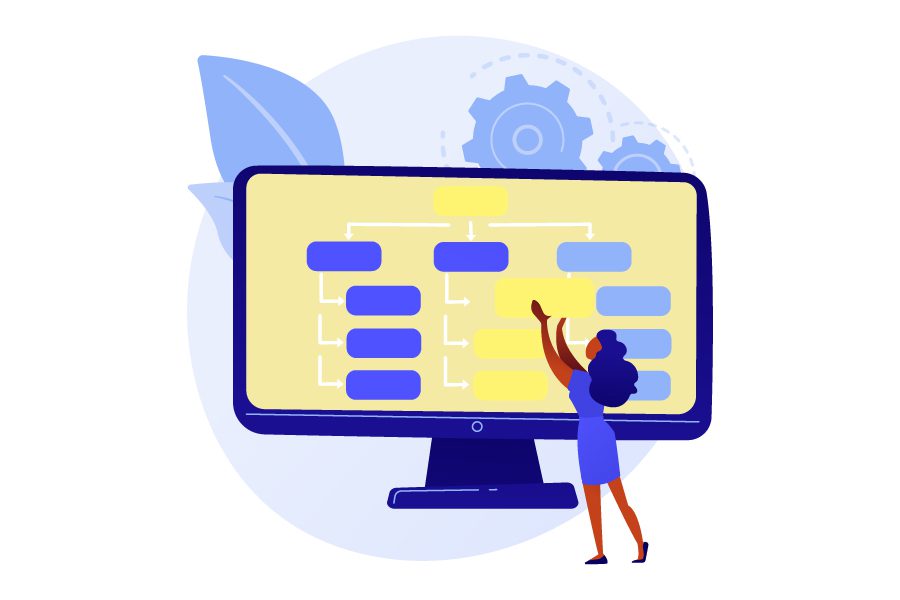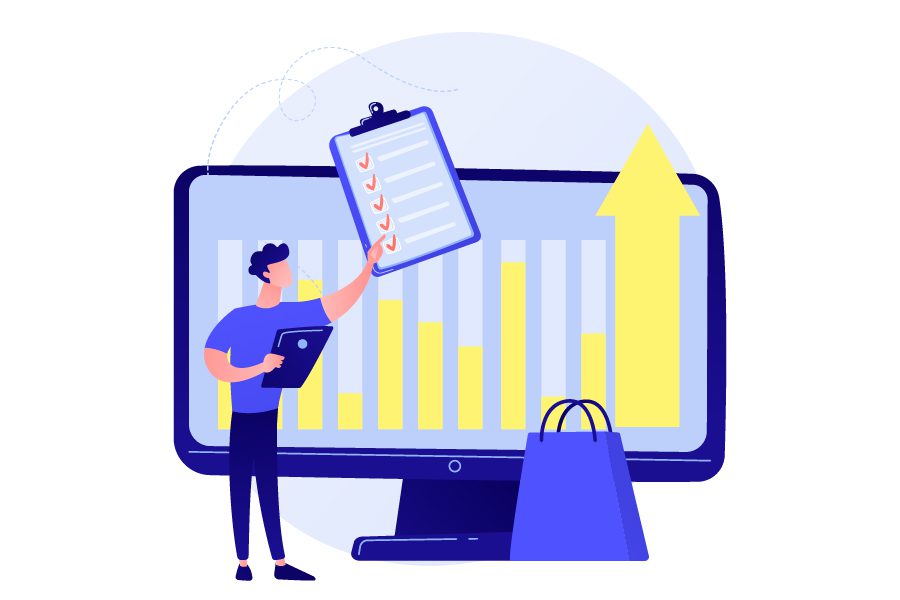Internal linking is an essential part of any SEO link-building strategy. While it’s often overshadowed by external backlinking, it should never be overlooked. With our experience in the field, our team at CLICKVISION SEO wants to elaborate on the internal linking benefits and how they affect your business and online success.
By explaining the main advantages you may experience from an efficient internal linking strategy, we want to encourage you to optimize your website further to bring better results. Furthermore, we want to emphasize its importance by explaining each benefit separately and highlighting the most important aspects. Continue reading to discover the full range of benefits from a successful internal linking strategy!

Source: freepik.com
Benefits of Internal Linking
As mentioned, internal linking is an essential part of your website optimization. With numerous benefits at hand, the ones that impact your business the most are the following:
- Enhanced user navigation
- Improved SEO performance
- Establishing content hierarchy
- Distributing page authority efficiently
- Reducing bounce rates
- Encouraging conversion paths
- Showcasing related content
- More efficient crawling
Enhanced User Navigation
The first reason and benefit of incorporating an optimized internal linking strategy is enhanced user navigation. With our experience in the field, we’ve noticed that the biggest success is gained by optimizing the website with the users in mind. Thus, including appropriate internal links within your pages will enhance the website’s structure, making it easier for visitors to find what they’re looking for.
Since search engines like Google prioritize user experience above everything else, satisfying the visitor’s search intent should also be your priority. By allowing the users to move from one page to another effortlessly and without losing track of their search goals, they’ll have a better overall experience on your website. Furthermore, you’ll be providing them with additional content that’s relevant to their search.
Improved SEO Performance
Next, many companies turn to internal linking for improved SEO performance. As mentioned, by optimizing your website for users to navigate it easily, you’ll notice an improvement in the engagement metrics. Since search engines like Google prioritize user experience, better website engagement leads to higher ranking opportunities.
Giving the users the information they need by linking relevant pages will also affect the time they spend on the website. Thus, you’ll notice an improvement in the average session duration time and other engagement metrics. As expected, improving your engagement metric will not go unnoticed by the search engines. With higher user engagement and more time spent on your website, Google will start considering your content more relevant to the users and with more authority, increasing your chances of getting ranked.
Establishing Content Hierarchy
Another reason why you should focus on internal linking is to establish a content hierarchy. This is especially important if you plan on publishing different types of content related to your niche. By creating a logical hierarchy within your content through internal links, you’ll provide the users with a clear roadmap of different sections, topics, and categories present on your website.
For example, if you’re running a jewelry store and want to showcase different kinds of products, you can easily organize them based on their relevance. Thus, you can create separate content for necklaces, earrings, and bracelets without leaving the page visitors confused. Each of these products will act as parent pages to additional content you write about them, providing further relevant information for the readers.
Another way to achieve a flawless content hierarchy is by planning a topical map. This way, you’ll know which content you should interlink beforehand and save time on managing your internal links later on. The way this process works is by you creating one main pillar post to act as the main topic and then branching it off to different subtopics that have enough information to act as stand-alone articles while also complementing the content
Distributing Page Authority Efficiently
One of the biggest benefits of internal linking is the ability to distribute page authority efficiently. Having a high page authority improves your chances of the page getting ranked on the SERPs. It differs from domain authority because it focuses only on the authority that a singular page has.
Thus, having a high-ranking page with multiple backlinks linking to another page from your website will transfer some of that authority to it. This process may also increase the source page’s authority because it’ll be linking to your other pages, providing additional information to the visitors. Moreover, this practice is important because it allows authority to spread throughout your website, ensuring that search engines consider it as authoritative content.
Reducing Bounce Rates
The next benefit of internal linking you should know of is the reduction of bounce rates. Every business hates to see a visitor leave without taking any action on the website. This dreaded situation is commonly measured by the bounce rate metric, which tracks the number of users that leave the website after viewing a single page for a short amount of time.
To encourage visitors to further explore what your website offers, it’s important to include internal links with proper anchor texts. Doing so will intrigue them to visit other pages that provide relevant information to what they’re searching for. Thus, not only will this practice improve the user experience, but you’ll also experience a drop in bounce rate, making your website seem more reliable to the search engines.
Encouraging Conversion Paths
Internal linking is also known for encouraging conversion paths. Since the main goal of many businesses is to convert the visitor into a paying customer, having an optimized internal linking strategy can aid in the process. Instead of having to struggle to find what the next step is, internal links can act as a roadmap that the visitor can follow. Thus, the users can reach the end goal faster and won’t get frustrated during the process.
Since conversions don’t always have to allude to the visitor buying something from your website, internal links can guide the users to take the required action you want. For example, you can encourage them to sign up for your newsletter, participate in a survey, or sign up for a free trial.
Having insights into the customer journey lets you know which content and pages you should link to ensure a straightforward process. Whether you want to include a promotion on a page or include a newsletter subscription within your blog, you should always redirect them to the appropriate pages. Thus, you’ll optimize your conversion funnel by including proper internal links to better suit the visitor’s needs and expectations.

Source: freepik.com
Showcasing Related Content
Since many companies want visitors to spend more time on their websites, internal linking can achieve that by showcasing related content. After all, most visitors access your website to find certain information and satisfy their search intent. Thus, allowing them to seamlessly skim through your pages to gather additional insights into the subject will only improve their experience on the website.
More Efficient Crawling
Lastly, thoroughly thought-out internal linking leads to more efficient crawling. Even though your website should always be tailored to the visitor’s needs, search engines like Google still need to crawl it for indexation. This practice involves the deployment of bots that navigate your website’s pages to analyze what their content is about.
By creating an optimized website structure and guiding them through the pages, they’ll better understand which keywords and topics they should rank these pages for. If your content and website are tailored to your specific niche or industry, it’s very likely that this process will also enhance your topical authority, leading to higher-ranking opportunities.
Moreover, this practice is especially important if you regularly post new content. If you don’t link the new page to the rest of your website, it’ll become an orphan page because the search engine crawlers won’t be able to access and index it. On the other hand, by including the appropriate internal links to the new page, the crawlers will find it and index it faster, meaning that it’ll appear on the SERPs quickly.
Tell Google Which Keywords You Want to Focus and Rank for
Another advantage of having a strategically thought-out interlinking strategy we want to highlight is the ability to tell Google which keywords you want to focus on and rank for. To achieve this, you must devote your time to planning which anchor text you will use to link to the other pages. While many often overlook the importance of this practice, remember that using the proper anchor texts will benefit you in the long run.
Often referred to as a link text, this element is the visible and clickable text of the link. To indicate that there’s a link within the text, it’s displayed in a different color (usually blue) than the normal text and sometimes may also be underlined, but it’s not limited to. The reason why the anchor text plays a vital role in internal linking is because it gives the readers an insight into what the page it redirects to is about.
Besides giving additional information to the users, the anchor text informs search engines about the page’s content. To further optimize this process, you can use specific keywords you want to rank for as the anchor text. Thus, you’ll be giving Google clear instructions about which keywords and topics your website focuses on.
Measuring and Analyzing Internal Link Performance
Lastly, we want to highlight the importance of measuring and analyzing your internal link performance. Even though you may have thought out a flawless internal linking strategy, you wouldn’t know its results if you don’t keep track of its metrics. Furthermore, these numbers will give you a clear overview of its effects on your SEO efforts while indicating areas of improvement.
To ensure your internal linking strategy is driving the results you want, you should focus on the organic reach traffic and click-through rate metrics. If the strategy is working, then you’ll notice a rise in organic traffic since the visitors will be accessing more pages on your website.
On the other hand, if you’ve made efforts to optimize your anchor texts, you may also notice improved keyword rankings because the search engines have deemed your website more relevant. Other metrics that we advise you to monitor closely are the following:
- Page authority and ranking
- Time on site
- Bounce rates
- Conversion rates
It’s important to regularly check how your internal links are performing to ensure the best results. You can also use numerous online tools to perform a site audit and get a clear insight into areas of improvement.

Source: freepik.com
Conclusion
After discovering the most prominent internal linking benefits, you should understand why this SEO tactic is so important. Since it affects multiple aspects of search engine optimization, such as reducing bounce rates and improving crawlability, we highly advise you to take the time and plan out your internal linking strategy. If you’re having trouble finding appropriate internal links, you can always contact our team at CLICKVISION SEO, and we’ll come up with the right solutions to maximize your online reach. By working alongside us, you’ll gain access to the latest SEO methodologies and proven techniques that’ll help you enhance organic traffic. Contact us today, and our dedicated team will craft the ideal search engine optimization strategy tailored to your needs!
